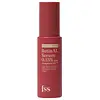What's inside
What's inside
 Key Ingredients
Key Ingredients

 Benefits
Benefits

 Concerns
Concerns

 Ingredients Side-by-side
Ingredients Side-by-side

Water
Skin ConditioningButylene Glycol
HumectantGlycerin
HumectantHoney
HumectantPentylene Glycol
Skin ConditioningPolysorbate 20
EmulsifyingFerulic Acid
AntimicrobialPanthenol
Skin ConditioningDimethyl Isosorbide
SolventPhenoxyethanol
PreservativePolyacrylamide
Opuntia Ficus-Indica Stem Extract
Skin ConditioningC13-14 Isoparaffin
EmollientStyrene/Acrylates Copolymer
Chlorphenesin
AntimicrobialHydroxypropyl Cyclodextrin
MaskingViola Tricolor Extract
EmollientLaureth-7
EmulsifyingHydroxypinacolone Retinoate
Skin ConditioningSargassum Fulvellum Extract
Skin ConditioningCaprylic/Capric Triglyceride
MaskingBrassica Campestris Flower Extract
AntimicrobialCamellia Japonica Flower Extract
EmollientCentaurea Cyanus Flower Extract
AstringentCosmos Sulphureus Flower/Leaf/Stem Extract
Skin ConditioningMagnolia Kobus Flower Extract
AntioxidantNarcissus Pseudo-Narcissus Flower Extract
Skin ConditioningRosa Hybrid Flower Extract
Skin ConditioningRetinol
Skin ConditioningTetrasodium EDTA
Hydrolyzed Hyaluronic Acid
Humectant1,2-Hexanediol
Skin ConditioningDextran
Sodium Metabisulfite
AntioxidantTrifluoroacetyl Tripeptide-2
Skin ConditioningWater, Butylene Glycol, Glycerin, Honey, Pentylene Glycol, Polysorbate 20, Ferulic Acid, Panthenol, Dimethyl Isosorbide, Phenoxyethanol, Polyacrylamide, Opuntia Ficus-Indica Stem Extract, C13-14 Isoparaffin, Styrene/Acrylates Copolymer, Chlorphenesin, Hydroxypropyl Cyclodextrin, Viola Tricolor Extract, Laureth-7, Hydroxypinacolone Retinoate, Sargassum Fulvellum Extract, Caprylic/Capric Triglyceride, Brassica Campestris Flower Extract, Camellia Japonica Flower Extract, Centaurea Cyanus Flower Extract, Cosmos Sulphureus Flower/Leaf/Stem Extract, Magnolia Kobus Flower Extract, Narcissus Pseudo-Narcissus Flower Extract, Rosa Hybrid Flower Extract, Retinol, Tetrasodium EDTA, Hydrolyzed Hyaluronic Acid, 1,2-Hexanediol, Dextran, Sodium Metabisulfite, Trifluoroacetyl Tripeptide-2
Water
Skin ConditioningGlycerin
HumectantTriethylhexanoin
MaskingLactobacillus/Collagen/Mesembryanthemum Crystallinum Leaf Extract Ferment Lysate
Skin ConditioningCaprylic/Capric Triglyceride
MaskingPropylene Glycol
HumectantPolysorbate 80
EmulsifyingCentella Asiatica Leaf Extract
Skin ConditioningCetyl Alcohol
EmollientGlyceryl Stearate
EmollientPhenoxyethanol
PreservativeRetinal
Skin ConditioningPEG-7 Glyceryl Cocoate
EmulsifyingCeramide NP
Skin ConditioningSodium Hyaluronate
HumectantCrithmum Maritimum Extract
Skin ConditioningTromethamine
BufferingPolyglutamic Acid
Skin ConditioningHydrolyzed Hyaluronic Acid
HumectantHydroxypropyltrimonium Hyaluronate
Butylene Glycol
HumectantSucrose Laurate
Emollient1,2-Hexanediol
Skin ConditioningHydroxyacetophenone
AntioxidantInulin Lauryl Carbamate
Emulsion StabilisingSodium Acetylated Hyaluronate
HumectantPEG-75 Stearate
Water, Glycerin, Triethylhexanoin, Lactobacillus/Collagen/Mesembryanthemum Crystallinum Leaf Extract Ferment Lysate, Caprylic/Capric Triglyceride, Propylene Glycol, Polysorbate 80, Centella Asiatica Leaf Extract, Cetyl Alcohol, Glyceryl Stearate, Phenoxyethanol, Retinal, PEG-7 Glyceryl Cocoate, Ceramide NP, Sodium Hyaluronate, Crithmum Maritimum Extract, Tromethamine, Polyglutamic Acid, Hydrolyzed Hyaluronic Acid, Hydroxypropyltrimonium Hyaluronate, Butylene Glycol, Sucrose Laurate, 1,2-Hexanediol, Hydroxyacetophenone, Inulin Lauryl Carbamate, Sodium Acetylated Hyaluronate, PEG-75 Stearate
 Reviews
Reviews

Ingredients Explained
These ingredients are found in both products.
Ingredients higher up in an ingredient list are typically present in a larger amount.
1,2-Hexanediol is a synthetic liquid and another multi-functional powerhouse.
It is a:
- Humectant, drawing moisture into the skin
- Emollient, helping to soften skin
- Solvent, dispersing and stabilizing formulas
- Preservative booster, enhancing the antimicrobial activity of other preservatives
Butylene Glycol (or BG) is used within cosmetic products for a few different reasons:
Overall, Butylene Glycol is a safe and well-rounded ingredient that works well with other ingredients.
Though this ingredient works well with most skin types, some people with sensitive skin may experience a reaction such as allergic rashes, closed comedones, or itchiness.
Learn more about Butylene GlycolThis ingredient is an emollient, solvent, and texture enhancer. It is considered a skin-softener by helping the skin prevent moisture loss.
It helps thicken a product's formula and makes it easier to spread by dissolving clumping compounds.
Caprylic Triglyceride is made by combining glycerin with coconut oil, forming a clear liquid.
While there is an assumption Caprylic Triglyceride can clog pores due to it being derived from coconut oil, there is no research supporting this.
Learn more about Caprylic/Capric TriglycerideGlycerin is already naturally found in your skin. It helps moisturize and protect your skin.
A study from 2016 found glycerin to be more effective as a humectant than AHAs and hyaluronic acid.
As a humectant, it helps the skin stay hydrated by pulling moisture to your skin. The low molecular weight of glycerin allows it to pull moisture into the deeper layers of your skin.
Hydrated skin improves your skin barrier; Your skin barrier helps protect against irritants and bacteria.
Glycerin has also been found to have antimicrobial and antiviral properties. Due to these properties, glycerin is often used in wound and burn treatments.
In cosmetics, glycerin is usually derived from plants such as soybean or palm. However, it can also be sourced from animals, such as tallow or animal fat.
This ingredient is organic, colorless, odorless, and non-toxic.
Glycerin is the name for this ingredient in American English. British English uses Glycerol/Glycerine.
Learn more about GlycerinHydrolyzed Hyaluronic Acid is a form of hyaluronic acid. It is created by the hydrolysis of hyaluronic acid with a high molecular weight. Once created, Hydrolyzed Hyaluronic Acid has a low molecular weight.
Low molecular weight HA has been shown to hydrate and increase elasticity of the skin. Increasing elasticity is also associated with reduction of wrinkle depth.
One study found topical low molecular weight hyaluronic acid may be considered for the treatment of rosacea in the adult population. However, we always recommend speaking with a professional about your skin concerns.
Hyaluronic acids are a humectant. This means they draw moisture from the air. Hyaluronic acids help moisturize, soothe, and protect the skin.
Read more about other common forms of hyaluronic acid:
Learn more about Hydrolyzed Hyaluronic AcidPhenoxyethanol is a preservative that has germicide, antimicrobial, and aromatic properties. Studies show that phenoxyethanol can prevent microbial growth. By itself, it has a scent that is similar to that of a rose.
It's often used in formulations along with Caprylyl Glycol to preserve the shelf life of products.
Water. It's the most common cosmetic ingredient of all. You'll usually see it at the top of ingredient lists, meaning that it makes up the largest part of the product.
So why is it so popular? Water most often acts as a solvent - this means that it helps dissolve other ingredients into the formulation.
You'll also recognize water as that liquid we all need to stay alive. If you see this, drink a glass of water. Stay hydrated!
Learn more about Water